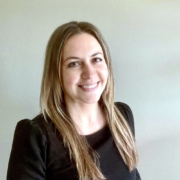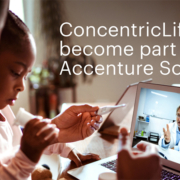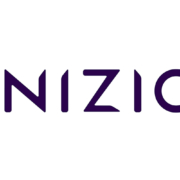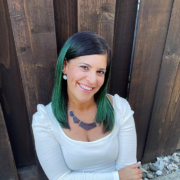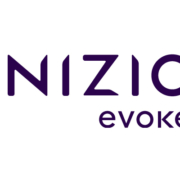The future of pharma marketing: making your message ‘meaningful, memorable and magical’
The future of pharma marketing: making your message ‘meaningful, memorable and magical’
VMLY&R’s Walter Geer shares his take on the industry’s progress over the past several decades, and the importance of technology, brand authenticity, patient access and much more.
By Maria Fontanazza • [email protected]
Technology is responsible for the personal experience that patients and consumers have come to expect from brands. And when you dive deeper, technology is raising the stakes even higher for pharma brands and marketers, pushing them to more effectively deliver messaging that resonates with each unique individual. What makes patients tick? How is their day going? What part of the patient journey are they in? So much change has happened and so much is possible as a result of technology, and as Med Ad News celebrates 40 years in the business, we’ve been asking industry stakeholders to reflect on the tremendous evolutions that have brought us to where we are today. Our most recent conversation features digital advertising expert Walter Geer, chief experience design officer, VMLY&R.
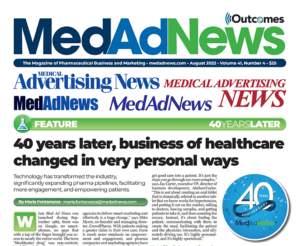
Four decades later, digital transformation has catapulted the industry into a new era of smarter clinical research, drug development and marketing, and interaction with patients and providers. In the August 2022 issue, Med Ad News asked industry to reflect and look forward.
Med Ad News: What are the most significant changes you’ve seen in healthcare and pharmaceutical marketing?
Walt Geer: I think what we’ve seen over the past several decades is a resurgence of what it means to be a brand. If we look at the world today, the most popular brand in the world is Pfizer. When would anyone have imagined that a pharma brand would be the most recognizable, most well-known brand in the world? What it also showed us is that over the years we’ve seen this focus now on what it means to be authentic for a brand, and what it means to have a brand that means something and stands for something. As we’ve seen over these past decades, it’s grown into this space where now pharma is going head-to-head with the biggest brands in the world, and really showing up in ways that quite frankly not many other brands can. I mean, how many brands can say, “we’ve saved the world”?
Med Ad News: What role is technology playing in the industry’s evolution? What key technologies are driving the change?
Walt Geer: When we talk about the past two decades — wait, let’s talk about the past five years! Technology has advanced at such a rapid pace now that even for the largest of brands, it’s hard to keep up. But what is so interesting and intriguing about the health space is that you see the biggest technology companies in the world tagging along and trying to work on health. You have companies like Amazon, Apple, etc., who are all focused on health. That is telling in and of itself. But as we move forward, I think the biggest change we’re seeing is technology giving people the access to their information — not just access in general, but access in real time. The fact that we now have wearable devices that tell us about our heart and whether our heart is okay through a watch, that’s impressive; or the fact that there are pills with cameras that you can swallow. All of these things now have shown us that the way HCPs deal with consumers or patients is changing at a rapid place. But more importantly, that’s giving power back to the patients, because now an individual can have actual insight and information about how they feel and what’s going on within their bodies before actually going to a doctor. So a patient’s role has changed by way of technology because now patients have that sense of ownership and they’re coming to the table with the data before a doctor gets it.
And then there’s 5G. Then we start to dive deeper into wearable devices and what they mean, and what meeting with a doctor means. It is moving from this place where now a doctor can do surgery from across the country; I can communicate with a doctor through video in real time and they tell me how my heart is doing or how my blood pressure is to the second. So all these technologies have now brought patients and HCPs closer together, but I think what is going to be interesting to see as the years go on is who owns what parts of that data, and what do people feel comfortable with wearing on themselves and giving access to.
Med Ad News: What other technologies are you seeing right now as being useful to the pharma companies — what are they looking for your teams to leverage more?
Walt Geer: That’s a really good question, because while everyone is quick to move forward with innovation, the truth is that everyone is in a race to be second, because no one wants to be the first to try that new thing that quite frankly might mean more money, more time to learn, and more time to build. And we all know that the timeline to get projects done with pharmaceutical companies is longer. So I would say that for pharma companies, it’s probably a little more difficult to keep up with trends in technology. However, they are certainly doing a lot better than they were in the past, and most certainly are not as far behind as people would think they are in comparison to other companies.
Now, what I find very interesting in the conversations that I’m having with some of these companies is augmented reality (AR) and what AR can actually do. AR being the ability to bring a doctor, in real time, directly next to you. Creating, humanizing chatbot experiences so that chatbots don’t feel so static and stale like we’re used to. Really using technology to create more human experiences with people that let people feel closer to the brand — through things like AR and artificial intelligence. How are we actually responding to a patient when in need, not just between 9 am and 5 pm when the doctor is in the office?
Med Ad News: Artificial intelligence and machine learning has been a buzzword — how do you see it working itself out in the world of pharma and medical device advertising and marketing?
Walt Geer: When we talk about health, the role in AI means using it to allow us to understand more about an individual and what they’re currently going through, and allow it to arm doctors and work side-by-side with them to get results that are more specific and current, and more importantly, faster. AI is not going to replace people. There’s this fear of the Terminator and the uprising of the bots. No, not at all. AI can allow us to truly identify things faster. They’re able to use AI to identify cancers a lot faster. AI in the health space is going to be vastly important moving forward; how do we lean on technology as a crutch to help us get to identifying [conditions], diseases faster, because there are a multitude of diseases in this space that in many cases go unseen for a significant amount of time because the doctor might have missed something or misdiagnosed something. AI will allow us to get to a healthier outcome quicker.
Med Ad News: When you’re working with clients, how have their challenges changed? How have their expectations changed?
Walt Geer: Clients are wanting to know more about their patients and more about their HCPs as opposed to the spray-and-bray technique that we’ve done for so many years. They are really getting into understanding the experience of these individuals on a day to day, understanding the entire consumer journey, and now thinking beyond the television as a means other than to show them a commercial at 1 am – smarter ways to target you in the moment that matters. Understanding the things you like and where you go in your day to day, and knowing all of that changes when you’re in a different state of cancer, for example — whether you’ve just been diagnosed, or you’re in chemo, or whether you’re taking tamoxifen or your just getting off taking tamoxifen. So I’m finding brands leaning heavily into understanding a day-to-day level —what an individual is going through to ensure there’s a high amount of relevancy when they reach out to this individual. And then also on the HCP side: actually understanding that HCPs are real people — they’re on social media like the rest of us, and they’re scrolling through Tik Tok at 1 am in the morning when they can’t get to sleep — just like a 17- or 18-year old child is. They engage in using the same platforms.
Med Ad News: Have you seen the talent pool change?
Walt Geer: Roles have changed – I’m seeing a lot more people on the digital side touching the business. But from a culture point of view, you’ve seen a lot more diversity and on both sides of the screens. For a brand now, especially with what we’ve gone through over the past three years of the pandemic and what COVID did to a significant amount of people of color, we’re in a moment where pharma brands cannot get it wrong, because getting it wrong is not like messing up a sneaker drop. You are actually affecting real lives, so ensuring to not be “cancelled” is a lot higher. There’s a greater risk involved. So the pool of talent has changed to some degree, there’s a greater emphasis on technology and digital platforms and the ecosystem beyond just “hey, let’s do a commercial and build a website”. It’s now, how do we create social validation by way of influencers, and how do we create social activation by way of conversation to help speak for our brand and represent our brand. What are different and unique ways that we can engage people at a conference that aren’t the same thing you’ve always seen, which is pushing a paper and pencil, or looking at an ipad.
We’ve seen a multitude of people coming from a broader range. Even myself — I’ve only been [in this industry] for four years, and I came out of adtech and brand/publishing for years. So bringing a completely different point of view has allowed us to do different and unique things with some of our brands. I think they’re looking beyond your typical pharma expert or pharma agency to agencies like us at VLMY&R where we are able to tap into people who were working on Ford, Walgreens and all types of businesses that allow us to have a completely different approach and thought process about how we engage people.
“As we move forward and what it takes to work with some of these pharma brands means going broader. The problem with the agency space as a whole is that we continuously recycle the same talent. Some of the agencies are recycling the same talents that been around five, 10, 15, 20 years, so you’ll get the same ideas. There’s benefit to going beyond and outside of that, or to gathering talent from a multitude of backgrounds. Part of the reason I’m here at VMLY&R is that their emphasis and strength on experience design and UX needs, and the fact that we can work with our pharma brands with people working in auto and fashion, etc.; it allows us to bring a completely different lens to the work.” – Walt Geer, VMLY&R
Med Ad News: What are your thoughts on the industry’s progress related to inclusion? What is critical to move forward with continuing the conversation?
Walt Geer: I definitely think there’s been some change – as I mentioned earlier, you start to see it on the screens as we have meetings. We’re seeing some of our brands creating health equity teams, and that’s a great thing. When we start to talk about progress, I think there’s been some, but I don’t think there’s been a significant amount. When we talk about health outcomes and health equity, it’s really important that there aren’t just people of color in the room but that there are people of color who are in decision making roles — they need to be at the actual table. It doesn’t matter if your whole team is people of color as junior level folks. Do they have the power to make real change that’s going to have an impact on the work that’s being done? Or, do they feel their voice is powerful enough in the room to carry through a project or an idea? Again, I think there’s still room for and work to be done, but I definitely believe it’s happening a little bit faster than what we’re seeing outside of the pharma space.
Med Ad News: When considering the patient access perspective and health equity, how do you think pharma is doing in terms of reach and education?
Walt Geer: I think we still have a far way to go. The technology advancements have been fantastic for a lot of people. But there are a lot of people for whom it has not been fantastic for the mere fact that they are missing out because they don’t have access to even some of those technologies. Not everyone can leave their house and buy an Apple Watch or the latest VR headset or Oculus to engage. So it’s important that the brands look forward to how we engage people; we’re looking through a broader lens and in some cases that means how do we build or create around the lowest common denominator to ensure that everyone has access.
Access is a huge thing and I will say that because technology is moving at such a rapid pace, there will be a significant amount of people left behind. So, what are we as brands and marketers and advertisers actually doing to ensure that those people won’t be left behind because they cannot afford the things that many of the rest of us can? That is one of the most important, critical things to think about as we move forward over the next decade. We’re moving at such a quick pace with wearables, and how do we create opportunities where other people can get that. In healthcare, that will be the biggest hurdle over the next decade to problem solve.
Med Ad News: What factors are critical to the success of this industry when we talk about pharma marketers being able to effectively reach their audience?
Walt Geer: I think that part of it is, how do you actually back into a solution that everyone has? We often talk about the right messenger; what is the right messenger? The right messenger isn’t always the device being used, but it’s the individual delivering the message, because we know the messenger matters so much. It’s the person who you see on a day-to-day basis or weekly; the person who might be in your church; the person you get your bagel from every day; the significant other, or friend or family member. How do we inspire people enough to spark conversations that can influence others? When you start to look at COVID, there was a huge amount of people who didn’t trust the vaccine, and there’s a large amount that did. There’s so much information out there — technology in some cases was an issue, because things like social media were able to get so much information out there that was false, and when you don’t have the means to dig or understand that, it’s easy to be misguided. So while technology is a great advancement for all of us and is an opportunity, it’s also a downfall to some extent. I think in some cases, it’s how do you pull the technology out of the message and deliver something to someone that is meaningful, memorable and magical in ways that actually matter to that individual.
Related Content
- Industry perspectives: shifts in HCP interaction, evolution in practice of medicine (an interview with Neil Matheson, Chairman, Atlantis Health)
- Industry perspectives: how has the talent pool changed? (an interview with Dennis Urbaniak, Orexo US and Jay Carter, AbelsonTaylor)
| Maria Fontanazza is the director of content, Med Ad News and PharmaLive.com |



